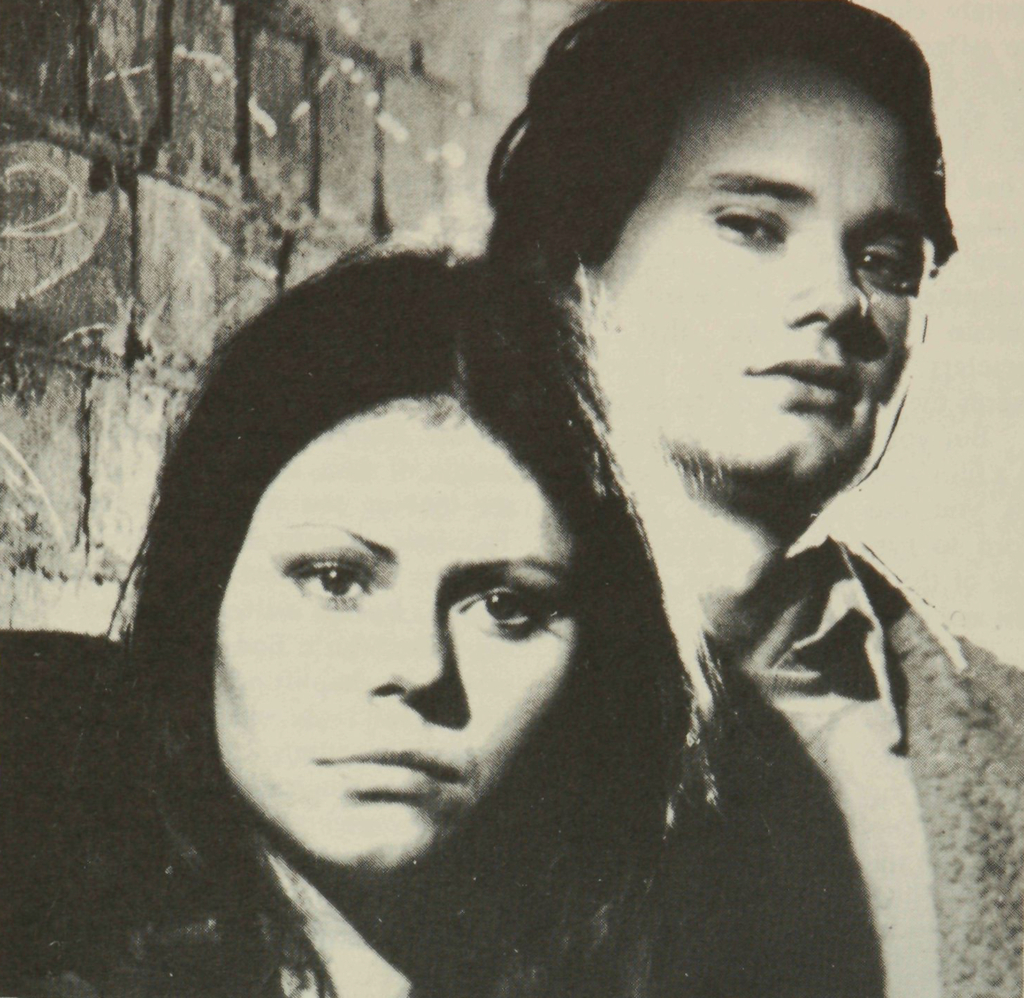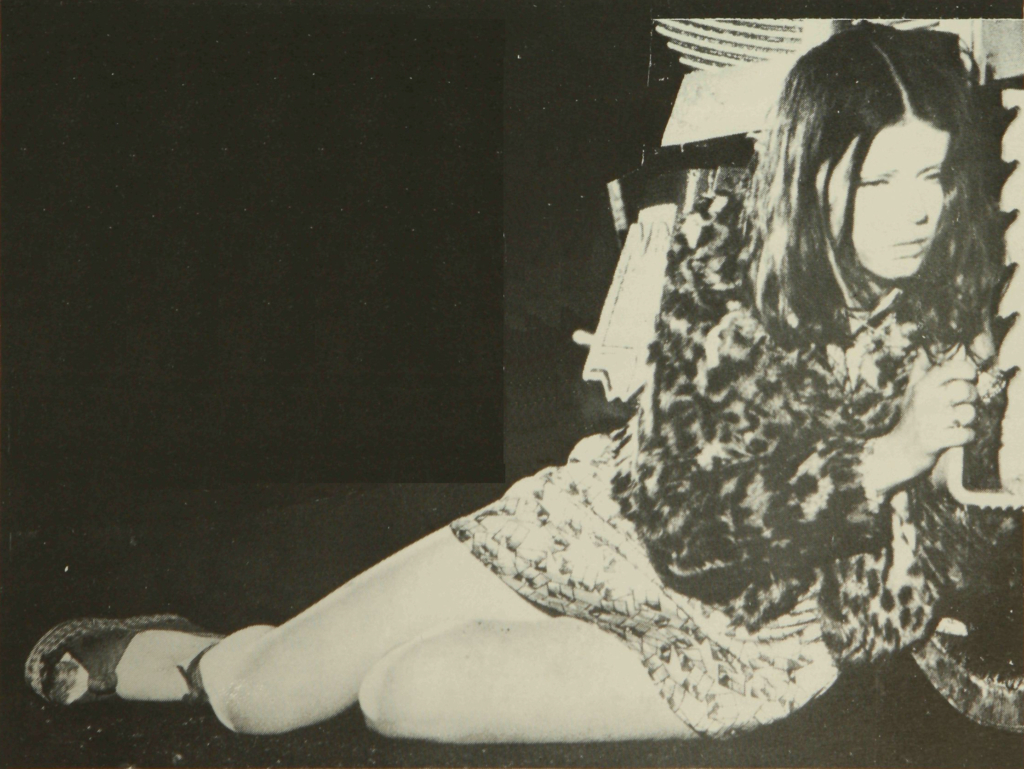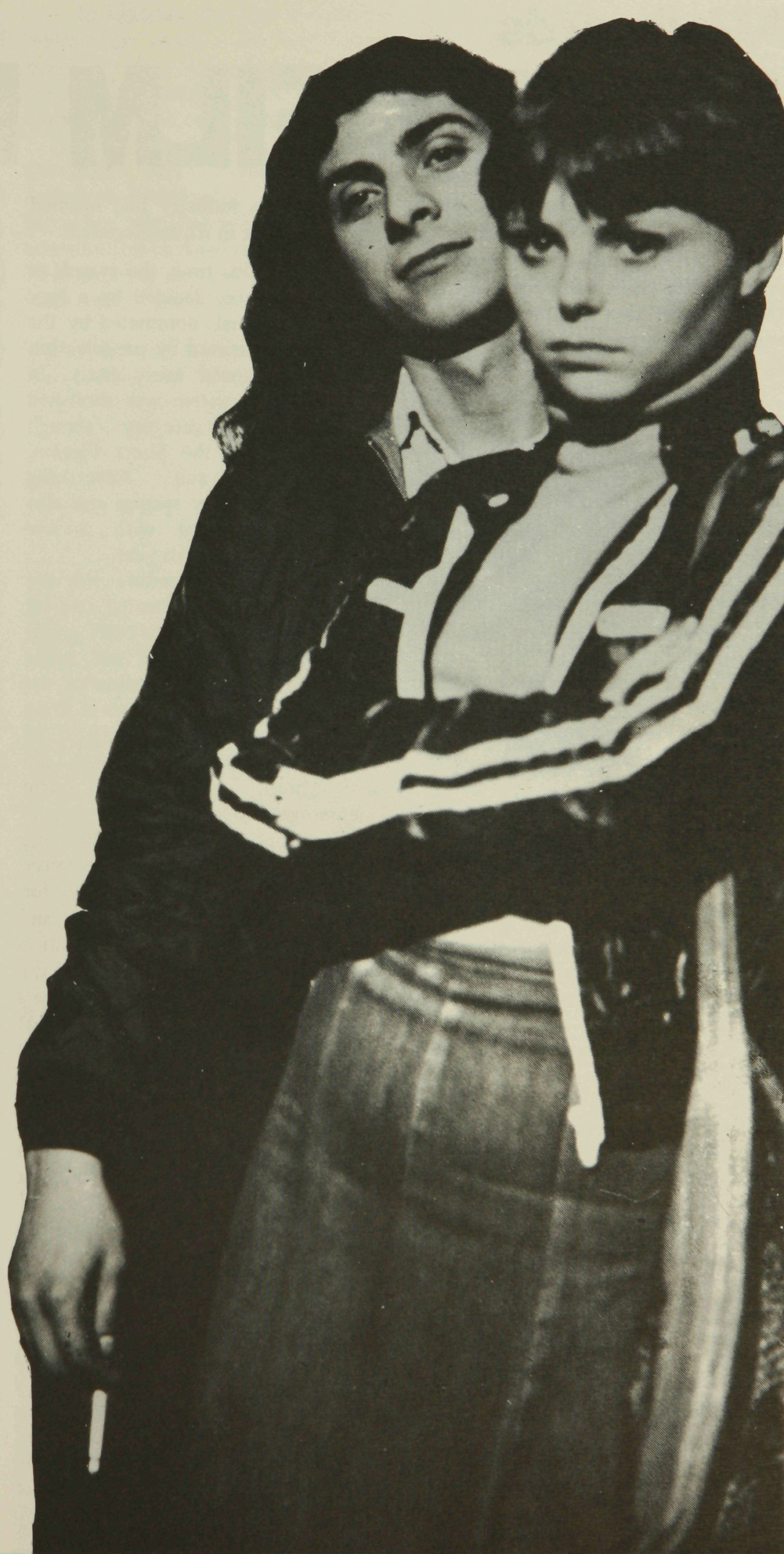What chance is there in the competitive film industry for a local film made on a smaller budget than that spent on public relations for a blockbuster like Star Wars?
If audiences of teachers, social workers and students made big box office, Mouth to Mouth would be bringing a handsome return to director John Duigan and his backers. Among these selected preview audiences, the film has already won a reputation as an Australian classic.
As one Metro reviewer put it: ‘At last I’ve seen an Australian film that realistically captures the lives of the kids I’ve taught in places like Shepparton, Sunshine and South Melbourne’. And the recent use of Mouth to Mouth as a keynote experience at a conference on the psychology of youth employment reflects its immediate acceptance in the professional community.
Recently Metro spoke to John Duigan about the sorts of issues that educationalists might like to take up after seeing the film. He went on:
John Duigan: A feature of Mouth to Mouth is that these kids are trying to survive in an alienating World. And the key to their alienation is the humiliation of being unemployed. I worked for months on an RMT(FM) program on unemployment, and I continually heard the same stories about how demeaning it is to continually seek work. In the film there is a scene where a row of young boys wait for job interviews. They are depressed and inhibited, but a few moments before we have seen that they are capable of a full range of spontaneous emotions. And inside the employers have already prejudged the applicants – so the kids are in a no win situation. They are made to feel inadequate if they lack jobs and an income, but if they seek work they are further humiliated.
This frustration is made even worse for the boys when their girlfriends take jobs from an escort service. The boys blame themselves. they become resentful, and this situation in turn undermines the one thing they have going for each other – their positive relationships.
The characters have their own particular perspectives on society. The girls have been institutionalised – and this experience limits their options. For instance they can’t go on the dole – they must steal to survive. They are trapped in a vicious circle after their initial trouble with the courts.
The boys are from the country. They are more naive than city boys. One of the features of the film is the time put in on the sound track, adding rough harsh and ugly sounds to contribute to the sense that Serge and Tim were confronting a huge and ugly metropolis.
And then there are the attitudes of the authorities – in the remand home, in the workplace and in the police force – always ready to condemn, to think the worst of the kids in every situation they face.
But Mouth to Mouth is not a negative film. One of the features of the film that I’m very pleased with is that it shows how people can team together to make a go of things – to support each other in hard times.
For instance one feels from the opening scenes that Jeannie has held Carrie together for years, and that for both girls the way of getting through is via personal loyalty and warmth.
We see a contrast between the relationships. There is lots of spontaneity between Jeannie and Serge. They are honest together from the beginning. After the bravado of the first night, Serge says to Jeannie that he’d like to book her up. She replies that he doesn’t have to worry, and that she’d like to be his girlfriend. Later when they argue over a stolen turkey, dinner of roast a dinner of stolen turkey, they speak directly about Jeannie’s record. And later when Serge starts to do a little shoplifting, Jeannie lays it on the line that it’s not on for him to steal – he hasn’t got a record and can go on the dole. But she can’t go on the dole, so she has no other choice. She must steal.
But on the other hand, despite moments of tenderness, Tim and Carrie never make it. Carrie has three layers of repression and torment, this self-destructive urge. She is attracted to the superficial world of smart apartments and chic clothes. She is never really completely comfortable with Tim’s gentler nature.
The stories of the two girls would present a mine of valuable starting points for teachers wishing to use a feature film to initiative discussions on sexuality.
Jeannie and Serge are affectionate and playful. In an early scene they roll on the bed and have a mock wrestle. But Carrie and Tim are inhibited, they slip under the blankets without a real sense of play.
Carrie is more likely to become a victim of her sexuality. She is attracted to tough, unforgiving Tony. He is a big shot w h o impresses her – but he uses her. He is prepared to see her gang banged when she is drunk, but she is saved by Jeannie. Later when the girls venture into the massage parlor scene to make some money, Jeannie is able to keep her distance. But we are left in the last scenes with the impression that Carrie is right for the escort service life. The world is making her hard, her face has become tough – and she will become a very nard lady. But she will survive.
I think that it is another strength of the film that it puts up these ethical situations for the viewer to consider. What is the morality of shoplifting when you are in the situation faced by these girls? Is it different for the boys? And what could the girls have done other than seek out a few dollars from the massage parlours? Were there any other alternatives? I feel that the film is sufficiently authentic for young viewers to identify with these situations.

These and other issues arising from Mouth to Mouth have been developed in a kit prepared by Bryan Sheedy and the students at Melbourne State College Film and TV Department. But what of the weaknesses of the films? Metro asked John Duigan if he had any criticisms of his own work.
JD: Well you can’t dig deep below the surface of these girls’ lives in a short film, so I feel a little frustrated that I couldn’t give more details about their past backgrounds. You can guess, but it would take a TV series to do justice to those characters and to their world. The danger of a film like Mouth to Mouth is that it can gloss over important issues and characters, and present only a surface view of experiences like being continually knocked back for jobs.
I would have liked to have spent more time developing the relationship between Tim and Carrie, which is, I think, potentially the most interesting relationship in the film. I think that the Carrie character is a really desperate character – and we could have afforded to have had a scene where difficulties between her and Tim were articulated. It’s a scene which I actually wrote, but felt that we had to leave it out for reasons of overall timing and momentum. A certain amount of character development had to be sacrificed to maintain that feeling that the characters were being impelled towards the conclusion of the story.
But you’ve got to remember that it’s a film – and you make decisions as best you can about what you can afford to have on the canvas – and some of the judgements you make are right and others are wrong.
I’m not at all certain about the way that the old man is played. I’ve talked about this in the Cinema Papers article (Winter, 1978); but briefly I fear that in trying to make him love able I’ve made him the least realistic of the characters.
A criticism that many kids pick up is that characters like these would swear a lot more than they do in the films. But realistic language would have offended the wider audience. It’s one of those sacrifices of realism to popular standards that a director must make.
Mouth to Mouth
The Story: Jeannie and Carrie split from a girls’ remand home. They are both keen to get on with their lives outside. They meet Serge and Tim – a couple of kids from Wonthaggi who are looking for work in Melbourne. The four support each other, living together in a disused railway power station. But no matter how hard they try, they can’t find jobs. The girls survive by shoplifting since as escapees they can’t go on the dole. At desperation point, they check out the massage parlour scene. Finally Carrie is on the streets, while Jeannie is returned to the Home, where she is still visited by the boys.

You can’t really hope to pose solutions to problems in films. The media doesn’t really lend itself to that kind of thinking. It’s obvious that solutions to the complex problems of our society are enormously complicated. But what I was trying to do in the film was to focus on some of the problems and situations in such a way as to make the experiences of people like those in the film accessible to a wider group of people in society. Hopefully in some small way, I can touch the sensibilities of the wider audience.
I welcome all kinds of films, TV, radio or books that spread some kind of increase in people’s sensibilities. The aim of Mouth to Mouth is in that direction – in giving a human face to a situation which people just read about – as a set of statistics. – John Duigan.
Workbook
John Duigan’s revelation that there are ‘lost scenes’ of Mouth to Mouth conjures up a world of events taking place off screen. It’s a world where scenes with their own dialogue, locations and visual styles have been sacrificed for the overall momentum of the film.
His further suggestion that the film could have been extended into a TV series presupposes whole new episodes attempting a greater understanding of the characters and their struggles.
Metro has taken up the notion of an extended Mouth to Mouth. The following activities will provide teachers with ideas for encouraging a fuller appreciation of the film with their general humanities area students. Metro‘s ideas will also help students to identify with some of the decisions taken by screen directors.
Off-screen
Prepare folders for the director on some of the scenes which could have occurred ‘off screen’. The folios could include:
• photos or drawings of possible locations (close to school if possible)
• some of the dialogue
• comic-strip style shot lists of sections of the scene
• lists of extra props, stunts, new characters, music or sounds.
The scenes could describe:
• developments in the relationship between Tim and Carrie
• Serge, Tim and Carrie are brought to the police station for an interview after the officers visit the power station
• Jeannie’s court hearing
• Serge and Tim visit Jeannie at Winlaton
• Tony and his mates meet Tim in a car park outside the pub
• Carrie is pregnant. She visits a doctor.
• Serge earns some money. He visits an estate agent to rent a house for the four.
TV series
A similar approach could be used to develop completely new episodes for the ‘TV Series’.
Let’s agree that the series consists of 12 half-hour episodes:
• list the titles of each episode with a brief summary of the events in each
• Then devise notes for some of the episodes as in off-screen.
• Prepare a chronology of the events taking place in the series.
• Write a long description, complete with dialogue, of one of the new scenes.
Background papers
The medium of film doesn’t lend itself to displaying the written communications which might take place between characters. But we can imagine that a number of documents, reports and even personal letters would have been produced during the events portrayed in Mouth to Mouth.
A class could prepare a folio of these background papers:
• One of the girl’s Remand Home files, including – name, age, school record, family history, police record, medical record, behaviour in the Home.
• Tim’s final school report, with a letter of reference from the headmaster.
• A reference from Serge’s first boss in Wonthaggi.
• A report from one of the staff members in the Home after the fight scene between Carrie and the other girl.
• Police reports on: the death of the derelict; the raid on the power station when they catch Jeannie, Serge and Tim; the shoplifting scene when the girls are nearly caught.
• Carrie writes a letter or card to Tim telling him that it’s all off. Tim writes a reply.
• Jeannie is back in the Home. She writes a letter to Serge, then sends him a tape describing her situation
• Carrie receives a letter from her mother. She replies on a postcard. Choose or make the sort of card that she might have selected.
• Carrie is interviewed by a policewoman one night in Bourke St. Dramatise the interview. Then write the policewoman’s report.
• Jeannie runs away from home. She has a list of places to stay. Write out the list.
• One of Tony’s friends threatens to tell the Police about the ‘king hit’. Tony leaves a note warning him not to open his mouth.
Design
You are asked to design a scene which takes place at Jeannie’s market stall.
• Make some preliminary notes for the scene including possible locations, drawings or photos of the stall (is there a market near your school?), a list of the things for sale, samples of some of the handicrafts for sale.
• Make a list of the steps that Jeannie would have taken to set up a stall
• Let’s imagine that this scene includes a discussion between Jeannie, her mother and Serge. Design the clothes that they will be wearing. There is a close-up of Serge showing his tattoos. Draw designs for his tats.
Promotion
You and your friends are asked to form a PR team to promote the forthcoming TV series of Mouth to Mouth.
• Collect newspaper ads and daybills for films and TV shows
• Make up your own newspaper ad for the series. Which aspects of the film would you highlight?
Prepare and record a series of radio ads.
• Dramatise a TV ad for the show
• One of the four leads is interviewed on radio or TV. Record this interview
• While the series is being filmed, you prepare a progress report for the newspapers. Prepare this report, including some interesting stories about the people involved in the series.
Music
When Carrie sits in a luxurious apartment we hear a song: “I met you in a Playboy magazine / Playing love games …”
• Collect other songs which might be used to capture Carrie’s character.
• Write out the lyrics of these songs.
• Make a cassette of a Top Ten for Carrie.
• Are there any songs suitable for the boys?
• Write some lyrics of your own for a song about Carrie.





